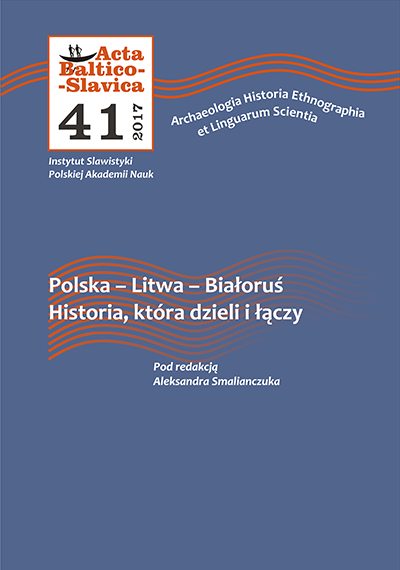From individual to collective identity: the case of autobiographical accounts from the Ukrainian-Russian and Ukrainian-Romanian borderlands
From individual to collective identity: the case of autobiographical accounts from the Ukrainian-Russian and Ukrainian-Romanian borderlands
Author(s): Helena KrasowskaSubject(s): Customs / Folklore, Oral history, Politics of History/Memory, Identity of Collectives
Published by: Instytut Slawistyki Polskiej Akademii Nauk
Keywords: cultural memory; oral history; Donbas; Bukovina; Poles in the East;
Summary/Abstract: The article presents the problem of cultural memory of Poles from two different regions of Ukraine, the south-east of the country and Carpathian Bukovina. It examines the following five main topic areas: the Second World War, life after the war (including the problem of the Russians), the issue of the Roman Catholic religion, the language question, and the problem of declaration of Polishness today. The accounts of the everyday life of Poles in the Ukrainian-Russian and Ukrainian-Romanian borderlands show important differences concerning their experience of war. In Bukovina, which used to be part of Romania, Poles display a much more consolidated sense of national identity. Despite the restrictions imposed by Soviet authorities, they gathered around the Roman Catholic Church as well as the institution of family, and taught the Polish language in private homes. This explains a continuity of their traditions, language, culture, and memory. On the other hand, throughout the Soviet period the Poles in Eastern Ukraine were cut off from contacts with Poland, the Roman Catholic Church and Polish organisations. Geographically dispersed and living in fear in their social environment, Polish families experienced a loss of their loved ones and faced severe punishment for declaring identity other than ‘Soviet’. Another factor at play was a relatively high rate of mixed marriages. The memory of contact with the Soviets is similar in both borderlands. The conduct of the new authorities was the same everywhere, and the examples quoted in the article represent a broader issue which would merit a separate study
Journal: Acta Baltico Slavica
- Issue Year: 2017
- Issue No: 41
- Page Range: 287-301
- Page Count: 15
- Language: English

